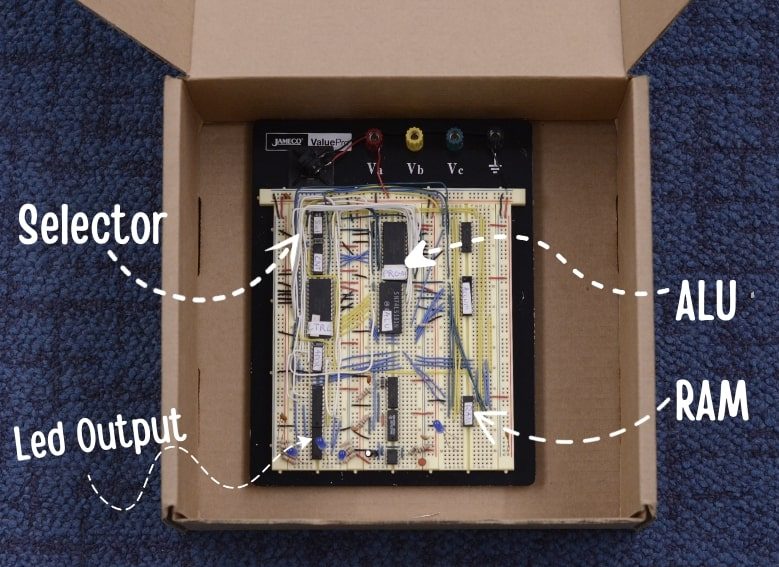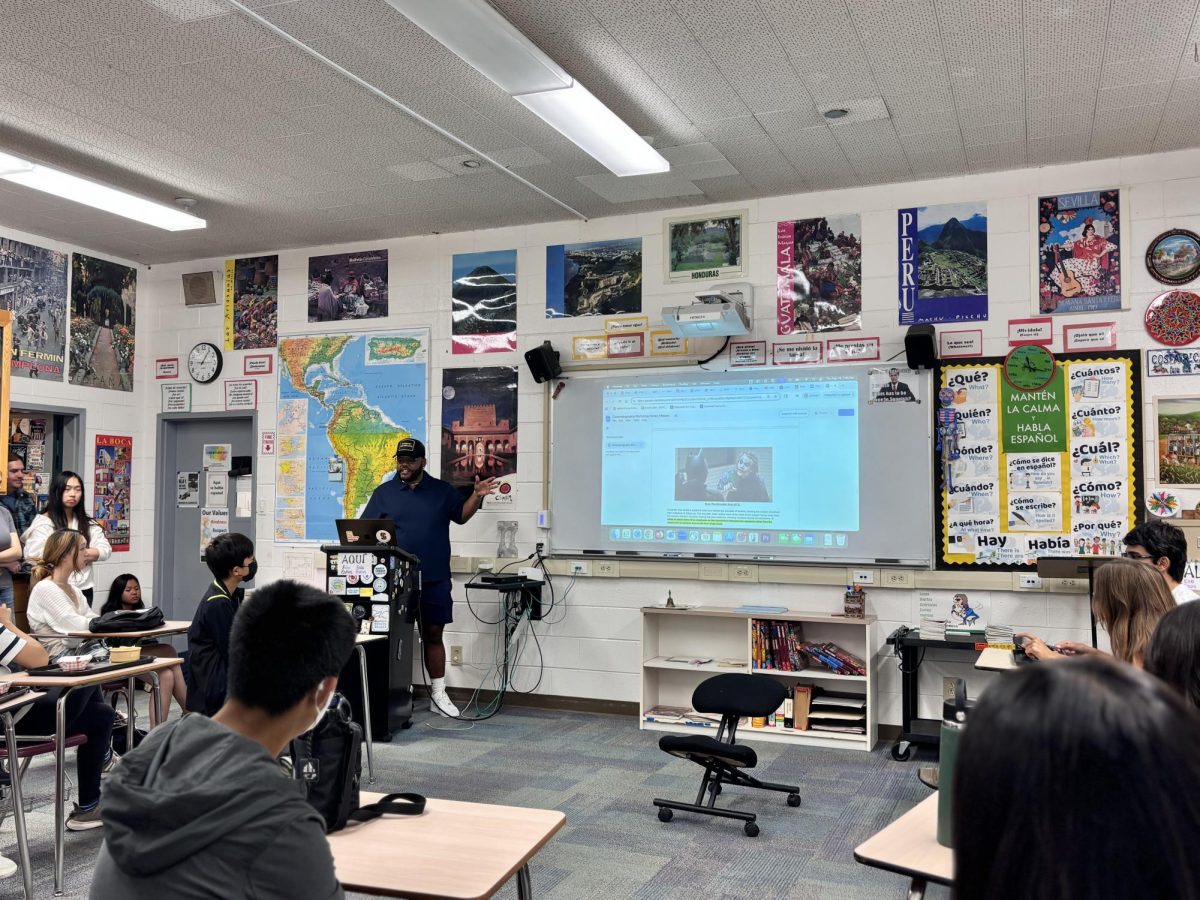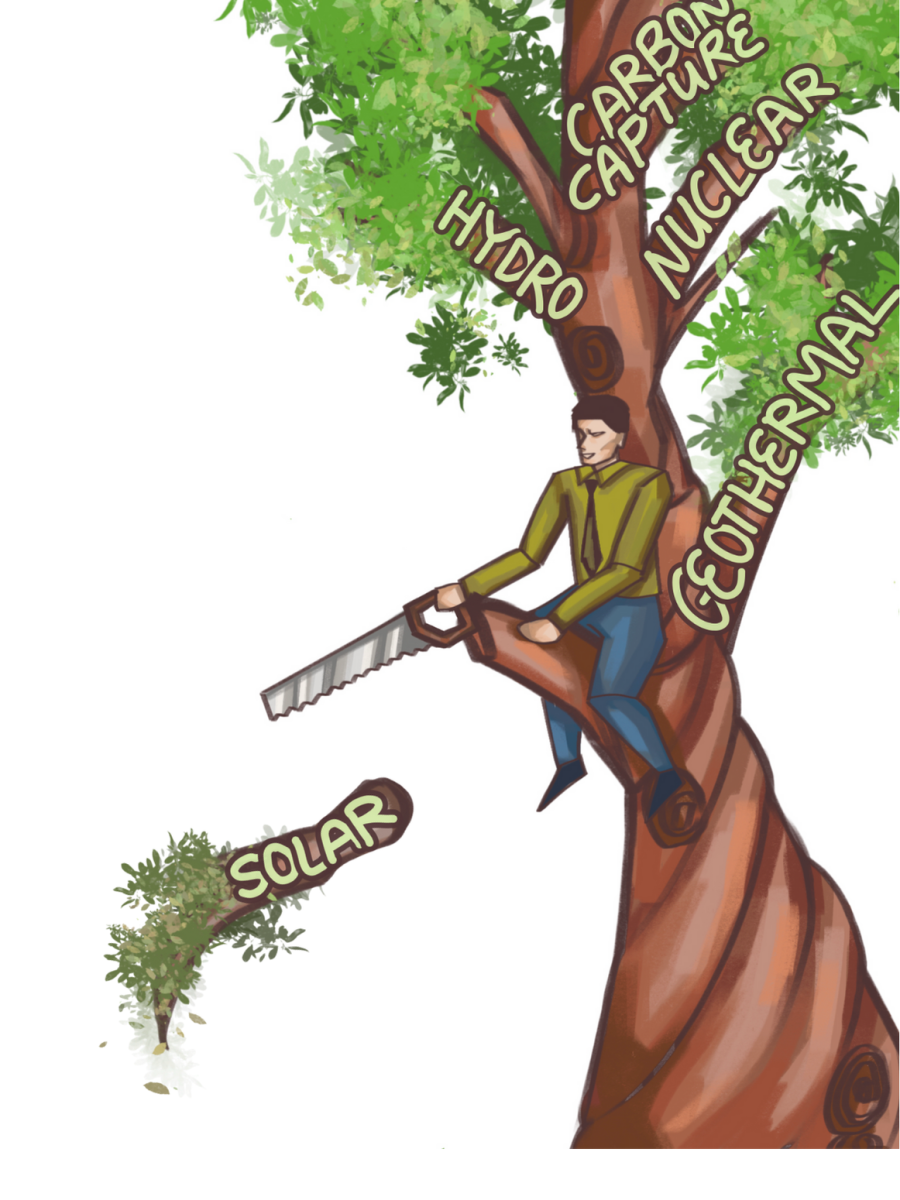You may have seen students walking around campus holding onto a brown cardboard box. What’s inside it? Turns out, each contains up to a dozen computer chips and a hundred wires, individually cut and threaded. All this is the work of a Computer Architecture student.
Students are currently working on a transistor lab, the second in a series of 10. Transistors are miniature semiconductors that act as electronic switches in a circuit board, allowing students to create combinational logic circuits that output to small LEDs.
“I really enjoy the fact that this class is done in hardware,” Computer Architecture teacher Marina Peregrino said. “These days, many similar courses are shifting to being simulated, but I still like seeing it being physically built. It really strengthens our debugging skills, whether you’re a software person or a hardware person.”
In each lab assignment, students first conceptualize their circuits on paper before building them on their boards. In the following months, they will learn how to wire materials like transistors, logic gates, and switches together to create components of a computer like read-only memory (ROM) and the arithmetic logic unit (ALU). These assignments culminate in a final project, where students build a 4-bit computer.
Junior Mihir Gupta elected to take the class out of his desire to deepen his understanding of the technology that powers software applications.
“The software aspect of tech is really interesting, but it’s important to learn the hardware if you’re going to do software,” Mihir said. “You’ll have a lot more intuition if you understand the hardware, so you’ll be able to solve more difficult problems.”
The semester-long Advanced Topics Computer Architecture course equips students with a foundational understanding of computer hardware through a combination of boolean algebra theory and hands-on circuit-building activities.
Senior Andrew Liang, who took the class in his sophomore year, highlighted the value of learning both by drawing schematics on paper and working on the board in Computer Architecture.
“Seeing the progression from just putting in the wires, the basic logic gates, to building up the chips is very useful,” Andrew said. “But also, don’t be afraid to start on paper before going onto the breadboard. In computer science as a whole, don’t be afraid of the paper.”


















![“[Building nerf blasters] became this outlet of creativity for me that hasn't been matched by anything else. The process [of] making a build complete to your desire is such a painstakingly difficult process, but I've had to learn from [the skills needed from] soldering to proper painting. There's so many different options for everything, if you think about it, it exists. The best part is [that] if it doesn't exist, you can build it yourself," Ishaan Parate said.](https://harkeraquila.com/wp-content/uploads/2022/08/DSC_8149-900x604.jpg)




![“When I came into high school, I was ready to be a follower. But DECA was a game changer for me. It helped me overcome my fear of public speaking, and it's played such a major role in who I've become today. To be able to successfully lead a chapter of 150 students, an officer team and be one of the upperclassmen I once really admired is something I'm [really] proud of,” Anvitha Tummala ('21) said.](https://harkeraquila.com/wp-content/uploads/2021/07/Screen-Shot-2021-07-25-at-9.50.05-AM-900x594.png)







![“I think getting up in the morning and having a sense of purpose [is exciting]. I think without a certain amount of drive, life is kind of obsolete and mundane, and I think having that every single day is what makes each day unique and kind of makes life exciting,” Neymika Jain (12) said.](https://harkeraquila.com/wp-content/uploads/2017/06/Screen-Shot-2017-06-03-at-4.54.16-PM.png)








![“My slogan is ‘slow feet, don’t eat, and I’m hungry.’ You need to run fast to get where you are–you aren't going to get those championships if you aren't fast,” Angel Cervantes (12) said. “I want to do well in school on my tests and in track and win championships for my team. I live by that, [and] I can do that anywhere: in the classroom or on the field.”](https://harkeraquila.com/wp-content/uploads/2018/06/DSC5146-900x601.jpg)
![“[Volleyball has] taught me how to fall correctly, and another thing it taught is that you don’t have to be the best at something to be good at it. If you just hit the ball in a smart way, then it still scores points and you’re good at it. You could be a background player and still make a much bigger impact on the team than you would think,” Anya Gert (’20) said.](https://harkeraquila.com/wp-content/uploads/2020/06/AnnaGert_JinTuan_HoHPhotoEdited-600x900.jpeg)

![“I'm not nearly there yet, but [my confidence has] definitely been getting better since I was pretty shy and timid coming into Harker my freshman year. I know that there's a lot of people that are really confident in what they do, and I really admire them. Everyone's so driven and that has really pushed me to kind of try to find my own place in high school and be more confident,” Alyssa Huang (’20) said.](https://harkeraquila.com/wp-content/uploads/2020/06/AlyssaHuang_EmilyChen_HoHPhoto-900x749.jpeg)











